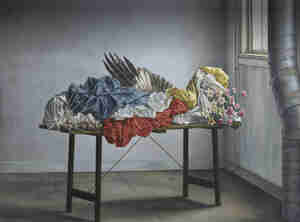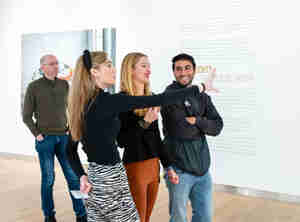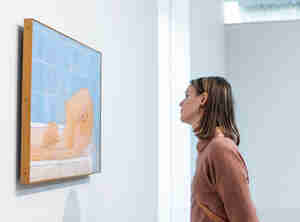- Plan your visit
- See and do
- Collection
- About us

Go back
Carel Willink
Landscape with Seven Statues, 1941
In Carel Willink’s (1900-1983) tranquil Landscape with Seven Statues, we see two rows of sculptures either side of a pathway. A glimpse of a city in the background, beneath the blue sky. When Willink painted the work in 1941, World War II was raging. The weathered statues, symbolic of a lost civilis
...
ation, stand abandoned in an empty landscape. Willink later wrote: ‘A sunny landscape, formerly symbolic of pastoral serenity, can form an intolerable threat’.
In the mid-1930s, classical statues make an appearance in Willink’s works, always placed in unexpected surroundings. The sculptures in this work are based on his own photographs of classical statues at the New Palace in Berlin and the gardens of the Rijksmuseum in Amsterdam. The two towers of The Moses and Aaron Church, close to the Waterlooplein in Amsterdam, can be seen in the distance.
Artist
Carel Willink
Title
Landscape with Seven Statues
Year
1941
Technique
Oil on canvas
Size
101 x 143 cm (h x w)
Type of object
Painting
Copyright
© Pictoright/Sylvia Willink
This work is protected by copyright. You need permission from the creator or his heir to download, edit, copy or publish it.










